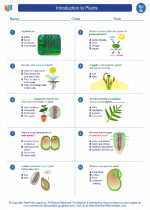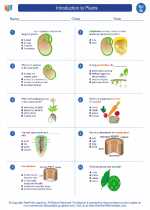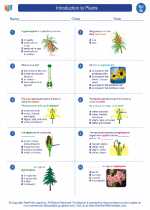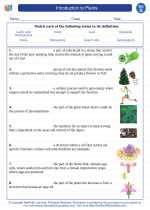Introduction to Plants -> valleys
Valleys
Valleys are low-lying areas of land located between hills or mountains, often carved out by the erosive actions of rivers or glaciers. They can vary in size from small, narrow valleys to large, expansive ones.
Formation of Valleys
Valleys can be formed through several processes, including:
- River Erosion: Rivers carve out valleys over long periods of time through the process of erosion, as flowing water wears away the land.
- Glacial Activity: Glaciers can also carve out valleys as they move, shaping the landscape through the process of glaciation.
- Tectonic Activity: Valleys can be formed through tectonic forces, such as the shifting of Earth's crust or the creation of fault lines.
- Weathering and Mass Movement: Other factors, such as weathering and mass movement, can also contribute to the formation of valleys.
Types of Valleys
There are several different types of valleys, including:
- V-Shaped Valleys: These are typically formed by the erosive action of rivers and often have steep, narrow walls.
- U-Shaped Valleys: These are typically formed by the erosive action of glaciers and have a characteristic U-shaped cross-section.
- Box Valleys: These are formed through a combination of tectonic activity and erosion, resulting in a flat valley floor with steep, parallel walls.
- Hangig Valleys: These are formed by the erosion of smaller glaciers that join larger ones, resulting in a hanging valley above the main valley.
Valleys and the Environment
Valleys play a crucial role in the environment, serving as habitats for various plant and animal species. They also provide important routes for water, nutrients, and sediment to flow through the landscape, influencing the overall ecosystem.
Study Guide
To study valleys effectively, consider the following key points:
- Understand the processes involved in the formation of valleys, including river erosion, glacial activity, and tectonic forces.
- Learn to identify different types of valleys and their unique characteristics, such as V-shaped, U-shaped, box valleys, and hanging valleys.
- Explore the environmental significance of valleys and their impact on the surrounding ecosystems.
- Consider the geological and geographical factors that contribute to the formation and development of valleys in various landscapes.
[Valleys] Related Worksheets and Study Guides:
.◂Science Worksheets and Study Guides Seventh Grade. Introduction to Plants
Study Guide Introduction to Plants
Introduction to Plants  Worksheet/Answer key
Worksheet/Answer key Introduction to Plants
Introduction to Plants  Worksheet/Answer key
Worksheet/Answer key Introduction to Plants
Introduction to Plants  Worksheet/Answer key
Worksheet/Answer key Introduction to Plants
Introduction to Plants  Worksheet/Answer key
Worksheet/Answer key Introduction to Plants
Introduction to Plants  Vocabulary/Answer key
Vocabulary/Answer key Introduction to Plants
Introduction to Plants  Vocabulary/Answer key
Vocabulary/Answer key Introduction to Plants
Introduction to Plants  Vocabulary/Answer key
Vocabulary/Answer key Introduction to Plants
Introduction to Plants  Vocabulary/Answer key
Vocabulary/Answer key Introduction to Plants
Introduction to Plants  Vocabulary/Answer key
Vocabulary/Answer key Introduction to Plants
Introduction to Plants 

 Worksheet/Answer key
Worksheet/Answer key
 Worksheet/Answer key
Worksheet/Answer key
 Worksheet/Answer key
Worksheet/Answer key
 Worksheet/Answer key
Worksheet/Answer key
 Vocabulary/Answer key
Vocabulary/Answer key
 Vocabulary/Answer key
Vocabulary/Answer key
 Vocabulary/Answer key
Vocabulary/Answer key
 Vocabulary/Answer key
Vocabulary/Answer key
 Vocabulary/Answer key
Vocabulary/Answer key

The resources above cover the following skills:
LIFE SCIENCE
Ecosystems: Interactions, Energy, and Dynamics
Use evidence and scientific reasoning to explain how characteristic animal behaviors (e.g., building nests to protect young from cold, herding to protect young from predators, attracting mates for breeding by producing special sounds and displaying colorful plumage, transferring pollen or seeds to create conditions for seed germination and growth) and specialized plant structures (e.g., flower brightness, nectar, and odor attracting birds that transfer pollen; hard outer shells on seeds providing protection prior to germination) affect the probability of successful reproduction of both animals and plants.